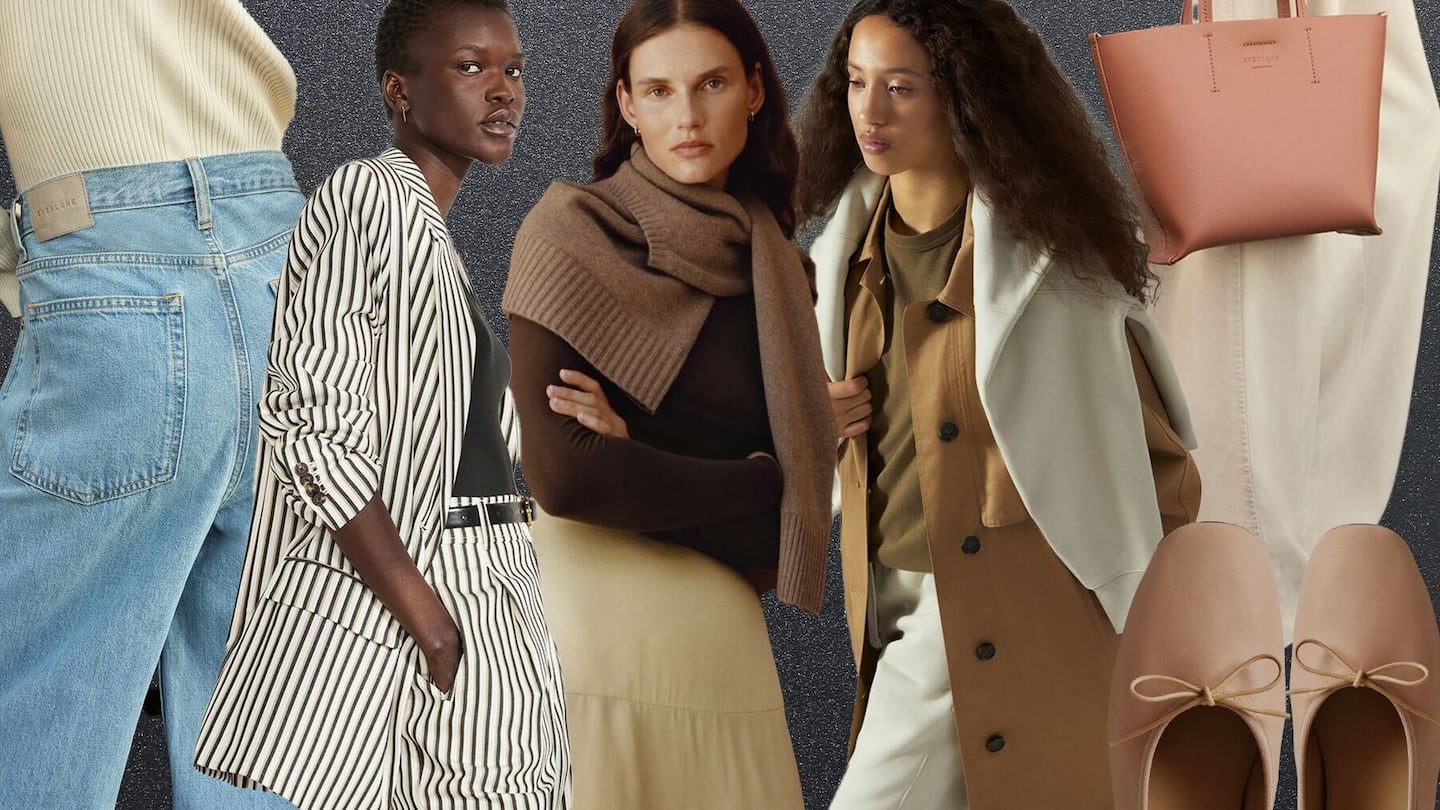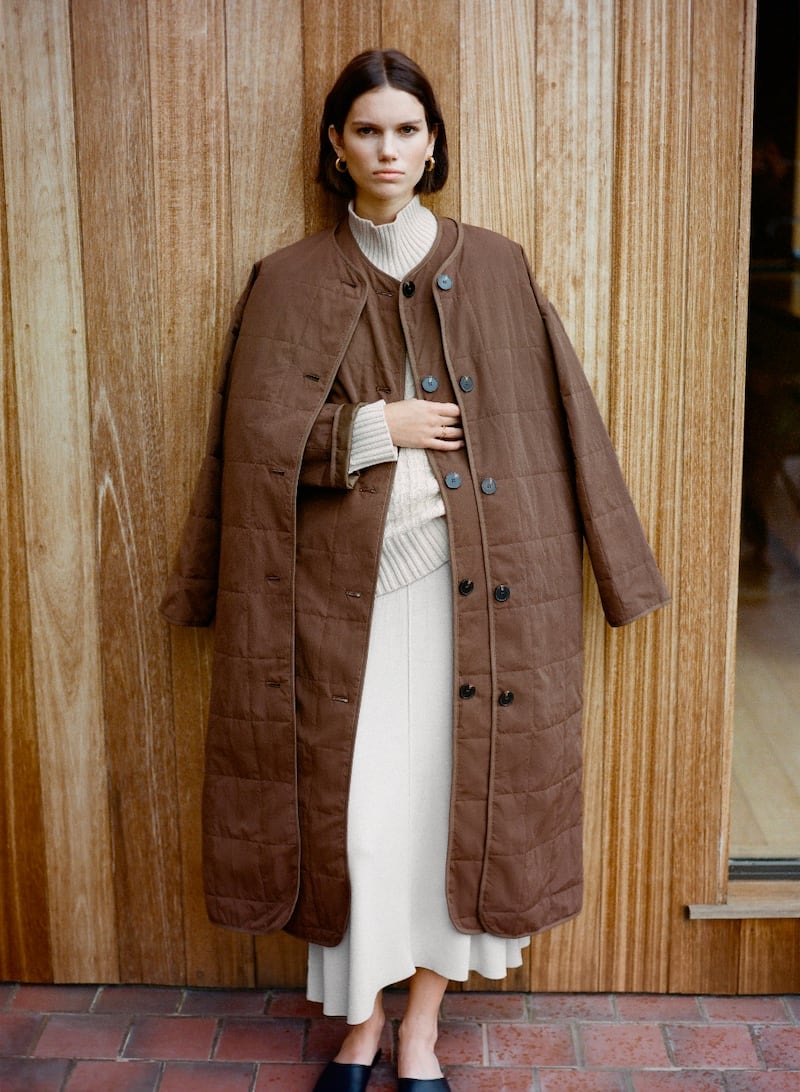
The Business of Fashion
Agenda-setting intelligence, analysis and advice for the global fashion community.

Agenda-setting intelligence, analysis and advice for the global fashion community.

A year ago, Everlane seemed like just another casualty of the direct-to-consumer downturn.
Like Allbirds, Parade and other troubled fashion start-ups, the basics brand was caught between growing competition, ballooning online advertising costs and investors who had suddenly pivoted their expectations from explosive growth to profitability.
Everlane struggled to meet either goal. Sales fell 3 percent in 2022, and the company had to take on debt just to ensure it had enough inventory. Founder Michael Preysman stepped down as chief executive at the start of 2022, replaced by retail veteran Andrea O’Donnell. At the start of 2023, the brand laid off dozens of employees in its stores and corporate headquarters.
Over the last year, Everlane managed to stem the bleeding. A new designer, Mathilde Mader, an alum of Marni and other luxury labels, helped stabilise sales with seasonal collections that made the case for Everlane as creative-led instead of yet another basics brand. The cost cutting had its intended effect: 2023 was the most profitable year in company history, with nearly $8 million in earnings before interest, taxes, depreciation and amortisation on more than $200 million in sales.
ADVERTISEMENT
“Everlane is in its strongest position since the pandemic began,” Preysman said in an email to The Business of Fashion. “We’ve created beautiful products, established a new operating model, made progress on our sustainability goals, all while delivering record profit.”
But for Preysman, who stayed on as executive chair and climate lead, and investors, including L Catterton, mere survival isn’t enough. The company hasn’t let go of its goal of reaching $1 billion in annual sales, according to a person with direct knowledge of the matter.
Everlane is looking in part to the pre-pandemic DTC playbook to get there. Some of last year’s profits will be invested into social media content designed to get more eyeballs on the new product. To replace O’Donnell, who left in January, Everlane wants to hire a CEO with “strong experience in digital and growth as well as a passion for our brand mission,” Preysman told BoF.
While the company’s strategy has brought stability, its ability to grow sales — let alone quintuple them — remains mostly theoretical. Sales rose by 1 percent last year — 35 percent was the norm pre-pandemic, according to credit card sales data from research firm Earnest — and Mader’s designs haven’t generated much conversation online. The brand’s earned media value, a measure of buzz on social media platforms like Instagram and TikTok, fell 32 percent year over year in 2023, according to influencer-marketing platform CreatorIQ.
There’s also the matter of whether $1 billion in annual sales is a goal still worth chasing for a brand like Everlane. Other DTC brands that rose fast and fell hard have reset expectations around slower but profitable growth, or sought a buyer willing to absorb short-term losses.
Everlane is not pursuing either of those paths, and investors are willing to play the long game, a person with direct knowledge of the matter told BoF. Its strategy is high-risk, high-reward, a bet that Everlane can still join apparel giants like Gap or J.Crew in the pantheon of American basics brands, albeit a few years later than originally anticipated.
“It’s good for any brand to have a really aggressive aspiration because it forces the organisation to think differently, be bold and go after big opportunities,” said Benjamin Bond, a principal consumer growth strategy consultant at Kearney, a management consulting firm. “Is it going to be an easy path to get there, especially if you’re exclusively participating in DTC? Definitely not.”
Everlane spent the last two years making broad changes to its business in hopes of restoring its pre-pandemic glory, when it was a profitable start-up with a novel approach to selling apparel online.
ADVERTISEMENT
When Everlane first launched in 2011, it sold itself as a go-to basics brand for Millennial urbanites, with a twist: It promised “radical transparency,” providing details for every product about where it was manufactured and how prices were set. By 2020, the company had added categories like denim and bags and opened 11 stores, which were on pace to account for more than half of that year’s sales growth.
The stores temporarily closed during the pandemic, and that summer, Everlane found itself facing criticism ranging from union-busting accusations to complaints from non-white employees about biassed treatment.
In September 2021, Preysman hired O’Donnell, who had previously led Uggs’ revival, to succeed him as CEO and get the brand back on track. Mader joined in 2022 to create a more unified idea for Everlane’s product, transitioning from frequent drops to fewer, more defined collections with an emphasis on design details.
O’Donnell implemented cost cuts across the business, including layoffs but also streamlining the supply chain to rely on fewer manufacturers and reducing and consolidating the number of fabrics it bought with remaining partners. Switching logistics providers singlehandedly saved $3 million, nearly half last year’s EBITDA, according to a person with direct knowledge of the matter.

The company also tweaked its proposition to consumers, from a purveyor of affordable, well-made basics to a fashion brand recognised for its styling and design.
It still sells plenty of cashmere crewnecks and t-shirts, but Mader has incorporated a more streamlined colour palette like cream and warm browns and elevated styling, as well as design details like quilted collarless jackets and coats meant for layering.
A leaner operation and revamped product offering have helped with the bottom line. But growing sales requires increasing awareness of Mader’s collections.
Unlike most other first-generation DTC brands, Everlane never relied too heavily on social-media advertising to build its business. In the early days, paid social media drove less than 10 percent of the company’s revenue, according to a person with direct knowledge of the matter.
ADVERTISEMENT
Instead, Everlane primarily attracted shoppers with teasers for new products posted on its own Instagram feed and email newsletters that went out multiple times a week. Items frequently sold out, and waitlists would then help predict reorder volumes, according to a person with direct knowledge of the matter. Sales surpassed $100 million in 2017, and the company generated more than $1 million in net profits that year.
That strategy faltered during the pandemic, when consumers’ inboxes were clogged with witty emails from similar-seeming brands, said a person with direct knowledge of the matter. As well, sustainability had become a less unique selling point.
The company has stuck to most of its sustainability promises, but its recent marketing is more focused on the look and feel of the clothes, rather than how they’re made. That helps the brand stand out from sustainability-oriented DTC labels. But it inserts Everlane into an equally crowded conversation around “elevated basics” and “quiet luxury for the masses,” alongside brands like J.Crew.
“When you do a rebrand effectively, you can’t predicate it on trends,” said Rebecca Robins, a global brand advisor. “How they execute on this timeless classic concept for the medium to long term will be really interesting to watch.”
So far Everlane’s aesthetic overhaul hasn’t resonated widely. CreatorIQ found that in addition to declining chatter about the brand on social media, often when Everlane is tagged, it’s mixed in with other brands, rather than in posts focussed specifically on Everlane itself, said Alex Rawitz, director of research and insights at CreatorIQ.
Everlane needs to focus on creating viral moments, Rawitz added. That’s helped Abercrombie & Fitch, which saw its EMV jump 22 percent year over year to $267 million in 2023 after a viral Instagram and TikTok campaign focussed on its women’s Curve Love denim.
“[Everlane] would need to get creators to rally around a certain product that people become obsessed with, whether it’s because of how great the fit is or how great the quality is,” said Leah Spector, CreatorIQ’s director of communications.
For now, the brand also has to contend with how to grow sales without a CEO. Since January, chief people and growth officer Kate Vukelich and chief financial officer Vince Adams are filling the role, according to two people familiar with the matter. L Catterton is leading the search for O’Donnell’s replacement, while at least five executives, including the chief design and supply chain officers, meet with board members regularly to devise strategies for the year, one of the people said.
Everlane wants a CEO who is as adept a storyteller as Preysman, whose influence is still prominent in the business, and can craft a new narrative around the revamped Everlane, according to a person with direct knowledge of the matter.
This new leader will oversee a ramp up in customer acquisition spend on paid ads across social media and search engines. Everlane is also exploring new ways to improve loyalty, including introducing artificial intelligence in the future to power chatbots, and to personalise communications with customers through text messages and email.
It will be a tricky needle to thread. Everlane must determine where to invest in restoring its cultural relevance, a necessary goal but one where the immediate return on investment is not always clear. And it must do so without falling into a trap of overspending.
Companies “get so focused on financial results and the idea of growing and the idea of becoming a relevant brand that they lose sight of the fact that there are some things that [seem like] silly investments,” said Ari Bloom, founder and chief executive at A-Frame Brands, a CPG brand developer. “They don’t make economic sense, but they’re the things that are gonna spark people’s interest in your brand.”
Everlane has time to figure that out. Selling the company in the current environment would be difficult even if there was a desire to do so, which eases pressure to chase unsustainable growth.
Still, while the turnaround isn’t complete, Everlane’s progress so far could be seen as an encouraging sign for other DTC brands that lost their way.
“Everlane could have come and gone,” Robins said. “The fact that they dug in and were really thoughtful about the rebrand …[there’s a] halo effect in the sense of, ‘new chapters are always possible.’”
The digital-first basics brand known for “radical transparency” is betting a stronger stylistic point of view will help it boost performance.
After public scandal threatened its ethical image, CEO Michael Preysman believes the L Catterton-backed disruptor can still win on radical transparency even as competitors lay claim to the sustainable fashion space.

Malique Morris is Direct-to-Consumer Correspondent at The Business of Fashion. He is based in New York and covers digital-native brands and shifts in the online shopping industry.
In London, where independent labels have been hit hard by the implosion of key stockist Matches, brands like Clio Peppiatt, Marfa Stance and Completedworks have grown direct-to-consumer businesses that peers can learn from.
Apparel start-ups founded on the promise of offering men the perfect T-shirt are proving resilient in an otherwise dreary DTC sector rampant with fire sales, bankruptcies and steep revenue declines.
Apparel brands Knot Standard and Billy Reid are teaming up in a move investors say we may see more of as fashion start-ups seek alternative funding routes to grow their businesses.
Warby Parker, Everlane and other brands are partnering with small, but buzzy fashion labels as an inexpensive way to find new customers, and regain some status with shoppers who have moved on.